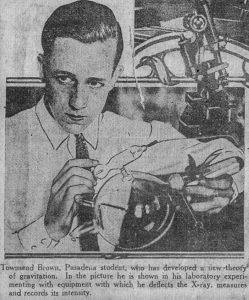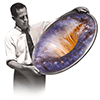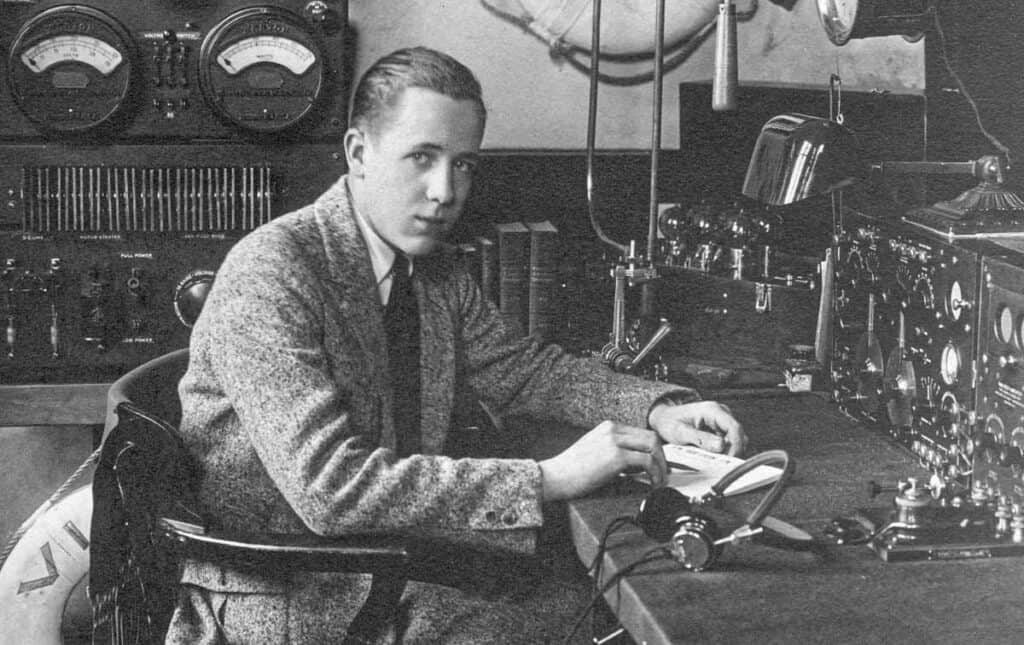(if you really want to know, just buy the book!)
Thomas Townsend Brown. T. Townsend Brown. T. T. Brown. He has passed into history under several variations of his given name. This website is dedicated to restoring his place in the pantheon of 20th century science – or, at least, to exploring the enigma hidden in his legacy.
What’s In A Name?

First: the name: Thomas Townsend Brown. The key ingredient there is the “Townsend,” which was his mother’s maiden name. Mary Townsend was the daughter of T. B. Townsend, (1837-1916) a businessman who amassed a considerable fortune building some of the most historic structures in central Ohio during the Gilded Age. Mary married L.K Brown, who with Mary’s brothers took on the management of the family enterprises. Thomas was their only child. As the only male of his generation, Thomas was expected to take the reins of the family enterprises. Destiny had another course in mind for him.
Let’s Start With Einstein

During his formative years, young Thomas was hailed in his hometown of Zanesville, Ohio as ‘The Next Edison’ for his early work with radio and electronics. But his discovery was more an extension of the work of another scientist whose surname begins with ‘E’ – Albert Einstein.
Einstein is most remembered for his Theory of Relativity and the most famous formula in all of physics, E=MC2. In his General Theory Relativity, Einstein challenged the Newtonian concept of gravity that had governed physics for more than 300 years. Einstein postulated the gravity was derived from the curvature of the very fabric of space itself, produced by the presence of large objects like planets and stars suspended in the heavens.
What is less known about Einstein is that after articulating General Relativity, he spent the latter half of his life trying to come up with a Unified Field Theory – a set of equations that would quantify a connection between all the known forces in the universe, most notably gravity an electromagnetism. That’s where Townsend Brown enters the picture.
What Did Townsend Brown Do?

In the 1920s, while Einstein was wrestling with the relationship between fundamental forces using mathematical equations, Townsend Brown was experimenting with something called a Coolidge Tube – one of the earliest X-Ray tubes.
What fascinated Brown was not the X-Rays, but something he observed in the tube itself: when a high voltage was applied, the tube appeared to ‘jump.’
As described in Chapter 9 of The Man Who Mastered Gravity:
Brown mounted the Coolidge tube in a careful balance, as if it were an astronomical telescope. His idea was to point the tube in different directions and somehow find a variation in the power used by the tube, the strength of the X-rays generated, or something. He didn’t find what he was looking for, no matter where he aimed his apparatus, no tell-tale differences appeared. But he did find something he wasn’t looking for; he found that the X-ray tube generated a thrust, as if it wanted to move.
He soon learned that the new force was not produced by the X-rays, but by the high voltages which they required. Many experiments were necessary to make certain that the force was not one of the known effects of high voltage, and that it is a mass force, like gravity, rather than an area force, like most known electrical forces.
Translation: While Einstein was struggling to find a link between electricity and gravity in math and physics, Townsend Brown believed he had found the link in the physical world.
Why Remember Townsend Brown At All?
If there is any truth to the tale, then in those jumping Coolidge tubes Townsend Brown discovered what Einstein could only dream of: a means of creating artificial gravitational fields that could counteract the earth’s own gravitational field.
Some might call that an ‘antigravity’, though Brown himself loathed the expression.
And if it is all true, then why doesn’t mankind have access to that technology ?
That question – and countless others – are explored in
The Man Who Mastered Gravity
A Twisted Tale of Space, Time
and The Mysteries In Between
by Paul Schatzkin
Now available from Amazon.com or by order from booksellers everywhere.

